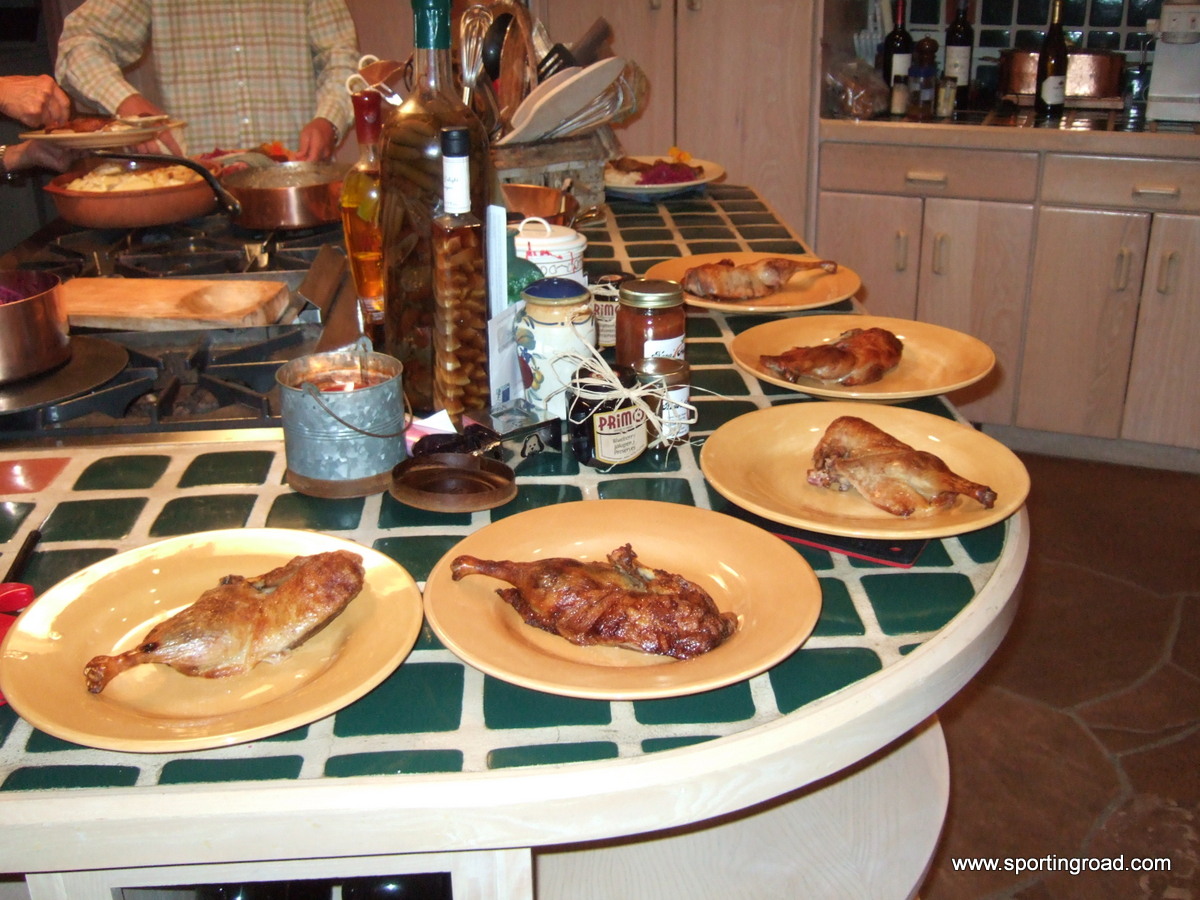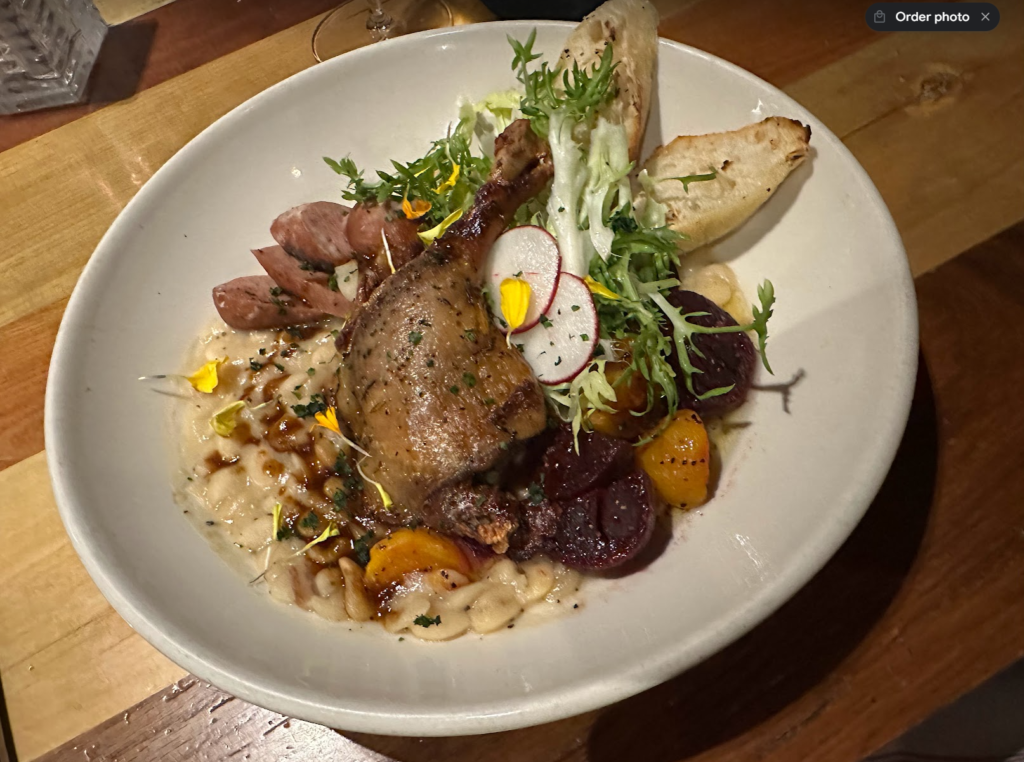The practice of confit first came to modern consciousness in France in 1859 with the publication of Henriette Davidis’ “Practical Cookbook” (via Mon Panier Latin). However, when most people think of confit, the first dish that comes to mind is “confit de canard,” or duck prepared in the confit method. The word “confit” originates from the French verb “confire,” loosely translated as “to preserve.” It is often associated with the southwest region of France known as Gascony, which is also recognized for its traditions around foie gras, rendered duck and goose fat, and other duck and goose-derived consumable goods.
Read More: https://www.tastingtable.com/1055949/the-historic-origins-of-confit/?utm_campaign=clip
_____________________________________________________________________
This is the classic duck confit recipe, where legs of duck are slowly cooked in duck fat until meltingly tender and then preserved in the same fat. Confit is best cooked slowly at a very low temperature until they are just falling off the bone. Keep the confit for at least a week in the refrigerator before serving to allow the flavors to mature. To serve, just heat up however many portions and serve with the sauce recipe below with lentils or roasted potatoes, or serve at room temperature plain with a simple salad.
INGREDIENTS
- 6 whole duck legs (legs and thighs attached, thigh bone removed with sharp knife)
- 1 cup salt
- 1 T. thyme
- 1 T. rosemary
- zest of one orange
- garlic
- shallots
- 1 quart rendered duck fat, melted
- Press duck legs, flesh-side down, into salt. Lightly sprinkle additional salt on fat side. In a nonreactive container layer duck legs with herbs and spices: Place legs in container, fat-side down. Store overnight, covered and refrigerated.
- 4 legs duck confit, cooled, recipe on sidebar
- Vegetable oil, for frying
INSTRUCTIONS
Pour the vegetable oil into a large skillet with 2 to 3 inch straight sides, about 1-inch deep or 1/3 of the way up the sides of the skillet. Heat the oil to 325 degrees F. In batches, carefully place the duck confit legs into the hot oil and fry, turning once, until golden brown, 2 to 3 minutes on each side. Remove from the oil with a slotted spoon and drain on paper towels.
To serve, spoon 3 to 4 tablespoons of the reduction sauce on and around each fried duck confit leg. Serve with mashed potato cakes, fried until crispy on each side.
Preheat the oven to 225 degrees F.
Remove legs from container, rinse off salt and seasonings under cold water and pat dry. Place in a medium roasting pan or other pan large enough to hold the legs in 1 layer. Pour the melted duck fat over the legs; they should be completely covered with fat. Cover tightly with aluminum foil and bake until the meat actually pulls away from the bone, 6 to 7 hours. Allow confit to cool in its fat. Store refrigerated, completely covered in fat, for up to 1 month before using.
FOR THE SERVING SAUCE:
In a large saucepan, add apple cider and port wine. Bring the liquid up to a boil and reduce to a simmer. Simmer until the liquid reduces by half, about 1 1/2 hours. The reduction can be stored in the freezer in ice cube trays for 1 month.



Leave A Comment
You must be logged in to post a comment.